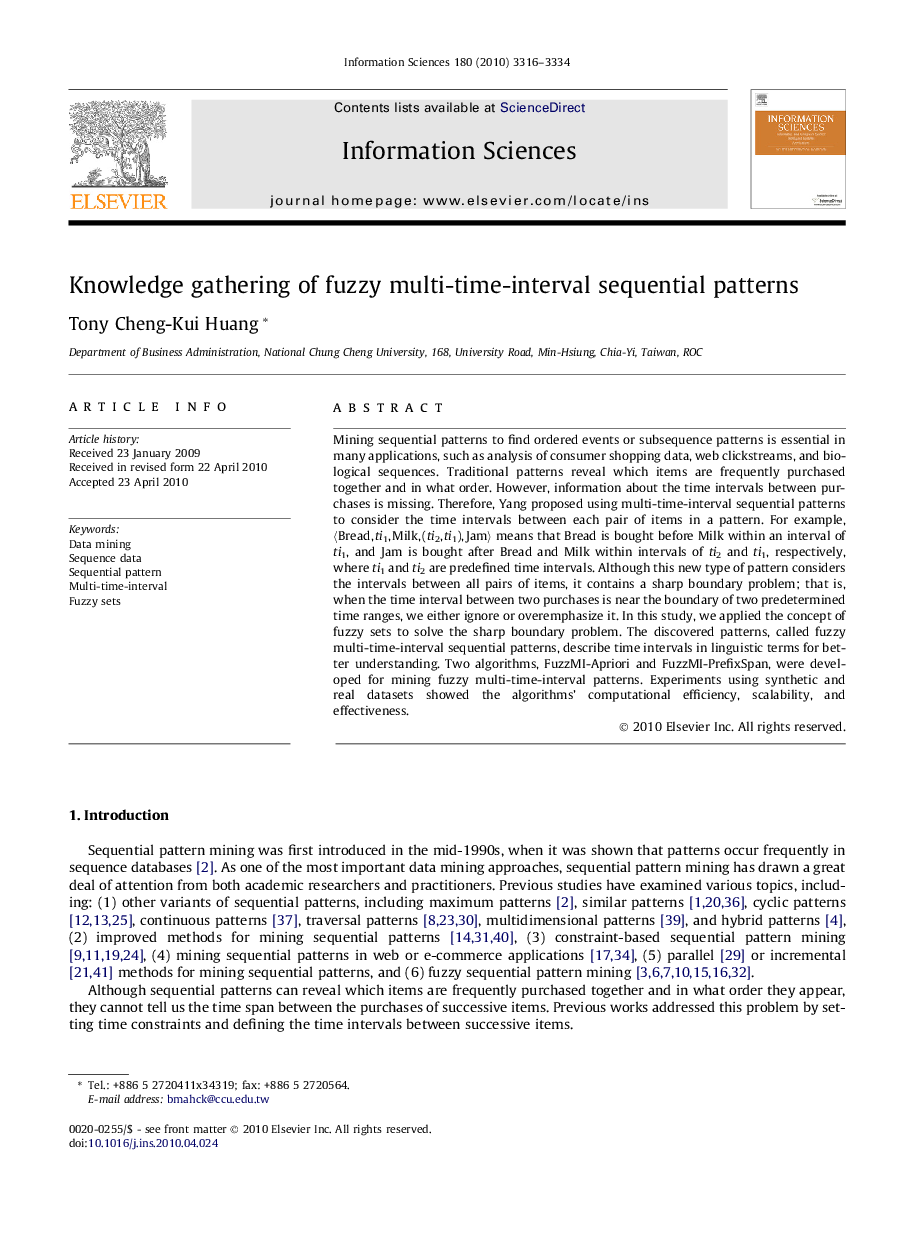| Article ID | Journal | Published Year | Pages | File Type |
|---|---|---|---|---|
| 395038 | Information Sciences | 2010 | 19 Pages |
Mining sequential patterns to find ordered events or subsequence patterns is essential in many applications, such as analysis of consumer shopping data, web clickstreams, and biological sequences. Traditional patterns reveal which items are frequently purchased together and in what order. However, information about the time intervals between purchases is missing. Therefore, Yang proposed using multi-time-interval sequential patterns to consider the time intervals between each pair of items in a pattern. For example, 〈Bread, ti1, Milk, (ti2, ti1), Jam〉 means that Bread is bought before Milk within an interval of ti1, and Jam is bought after Bread and Milk within intervals of ti2 and ti1, respectively, where ti1 and ti2 are predefined time intervals. Although this new type of pattern considers the intervals between all pairs of items, it contains a sharp boundary problem; that is, when the time interval between two purchases is near the boundary of two predetermined time ranges, we either ignore or overemphasize it. In this study, we applied the concept of fuzzy sets to solve the sharp boundary problem. The discovered patterns, called fuzzy multi-time-interval sequential patterns, describe time intervals in linguistic terms for better understanding. Two algorithms, FuzzMI-Apriori and FuzzMI-PrefixSpan, were developed for mining fuzzy multi-time-interval patterns. Experiments using synthetic and real datasets showed the algorithms’ computational efficiency, scalability, and effectiveness.
